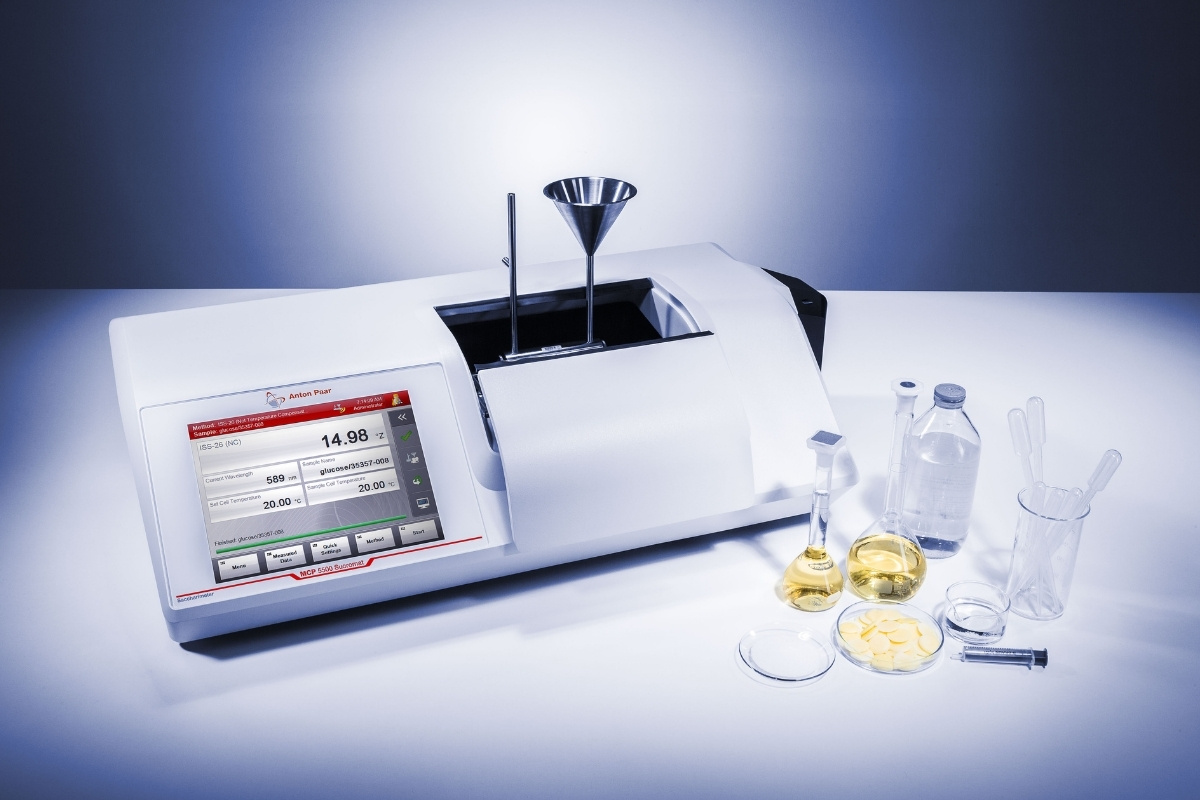
What is a polarimeter? A polarimeter is a scientific instrument used to measure the angle of rotation caused by passing polarized light through an optically active substance. This tool is essential in fields like chemistry, biology, and medicine. It helps scientists determine the concentration of substances, identify compounds, and understand molecular structures. Imagine trying to figure out the sugar content in your favorite soda or the purity of a pharmaceutical drug—polarimeters make this possible. They come in various types, from simple manual devices to advanced digital models. Whether you're a student, a researcher, or just curious, understanding how a polarimeter works can open up a world of scientific discovery.
What is a Polarimeter?
A polarimeter is a scientific instrument used to measure the angle of rotation caused by passing polarized light through an optically active substance. These devices are crucial in various fields, including chemistry, biology, and food science.
- Polarimeters help determine the concentration of a substance in a solution by measuring how much the substance rotates polarized light.
- They are essential in identifying the purity of a compound, as impurities can affect the angle of rotation.
- The first polarimeter was invented by French physicist Jean-Baptiste Biot in the early 19th century.
- Modern polarimeters use digital technology for more accurate and precise measurements.
- They are widely used in the pharmaceutical industry to ensure the correct formulation of medications.
How Does a Polarimeter Work?
Understanding how a polarimeter functions can help appreciate its applications and importance.
- A polarimeter consists of a light source, polarizer, sample tube, analyzer, and detector.
- The light source emits light that passes through the polarizer, creating polarized light.
- This polarized light then travels through the sample tube containing the optically active substance.
- The analyzer measures the angle of rotation of the polarized light after it has passed through the sample.
- The detector captures the rotated light and sends the data to a readout device, displaying the angle of rotation.
Applications of Polarimeters
Polarimeters have a wide range of applications across different industries.
- In the food industry, polarimeters measure the sugar content in products like honey and fruit juices.
- They are used in the chemical industry to identify and quantify chiral compounds.
- Polarimeters help in monitoring fermentation processes in breweries and distilleries.
- In the pharmaceutical industry, they ensure the correct enantiomer of a drug is used, as different enantiomers can have different effects.
- They are also used in academic research to study the properties of optically active substances.
Types of Polarimeters
Different types of polarimeters are designed for specific applications and levels of precision.
- Manual polarimeters require the user to manually adjust the analyzer to measure the angle of rotation.
- Digital polarimeters provide automatic measurements and are more accurate and user-friendly.
- Circular dichroism polarimeters measure the difference in absorption of left and right circularly polarized light.
- Laser polarimeters use laser light for higher precision and sensitivity.
- Spectropolarimeters combine polarimetry with spectroscopy to provide detailed information about a substance's optical properties.
Interesting Facts About Polarimeters
Here are some intriguing facts that highlight the versatility and importance of polarimeters.
- Polarimeters can detect counterfeit honey by measuring its optical rotation.
- They are used in environmental science to monitor pollution levels in water bodies.
- Polarimeters help in the quality control of essential oils by measuring their optical rotation.
- They are used in the textile industry to analyze the properties of synthetic fibers.
- Polarimeters can measure the concentration of glucose in blood samples, aiding in diabetes management.
Historical Significance of Polarimeters
The development and evolution of polarimeters have a rich history.
- Jean-Baptiste Biot's invention of the polarimeter in the early 1800s paved the way for significant advancements in optical science.
- Louis Pasteur used a polarimeter to study the optical activity of tartaric acid, leading to the discovery of molecular chirality.
- The development of digital polarimeters in the 20th century revolutionized the accuracy and ease of optical measurements.
- Polarimeters played a crucial role in the development of stereochemistry, the study of the spatial arrangement of atoms in molecules.
- They have been instrumental in the advancement of organic chemistry, helping scientists understand the behavior of chiral molecules.
Future of Polarimeters
The future of polarimeters looks promising with advancements in technology and new applications.
- Emerging technologies like artificial intelligence and machine learning are being integrated with polarimeters to enhance their capabilities and applications.
Polarimeters: More Than Meets the Eye
Polarimeters aren't just fancy gadgets. They play a crucial role in various fields like chemistry, medicine, and even food production. By measuring the angle of rotation caused by passing polarized light through an optically active substance, these devices help scientists understand molecular structures, purity levels, and concentrations.
Understanding how polarimeters work can open doors to new discoveries and innovations. Whether you're a student, a professional, or just a curious mind, knowing about polarimeters adds a valuable tool to your knowledge toolkit. They might seem complex, but their applications are straightforward and impactful.
Next time you enjoy a sweet treat or take a medication, remember that a polarimeter might have played a part in ensuring its quality and effectiveness. So, keep exploring, keep learning, and never underestimate the power of light and angles!
Was this page helpful?
Our commitment to delivering trustworthy and engaging content is at the heart of what we do. Each fact on our site is contributed by real users like you, bringing a wealth of diverse insights and information. To ensure the highest standards of accuracy and reliability, our dedicated editors meticulously review each submission. This process guarantees that the facts we share are not only fascinating but also credible. Trust in our commitment to quality and authenticity as you explore and learn with us.
